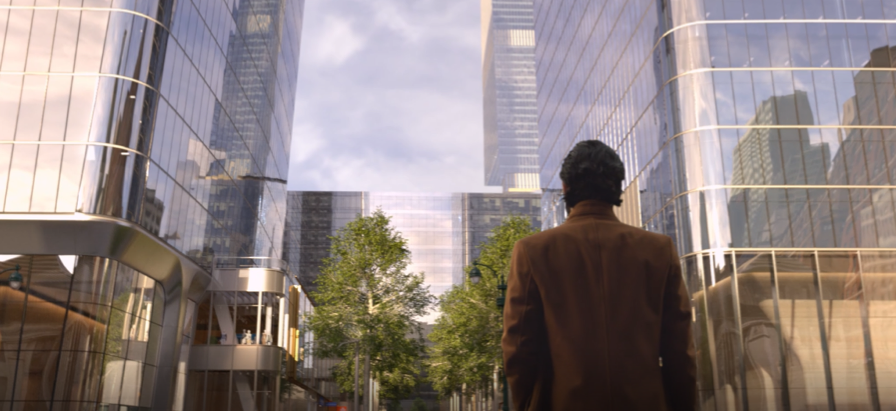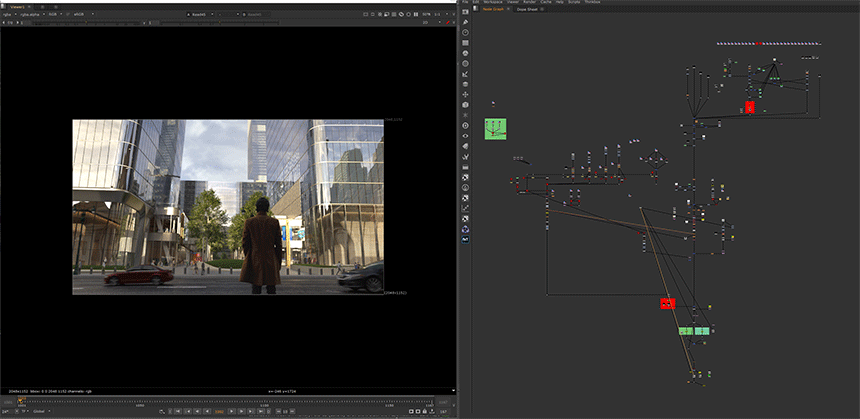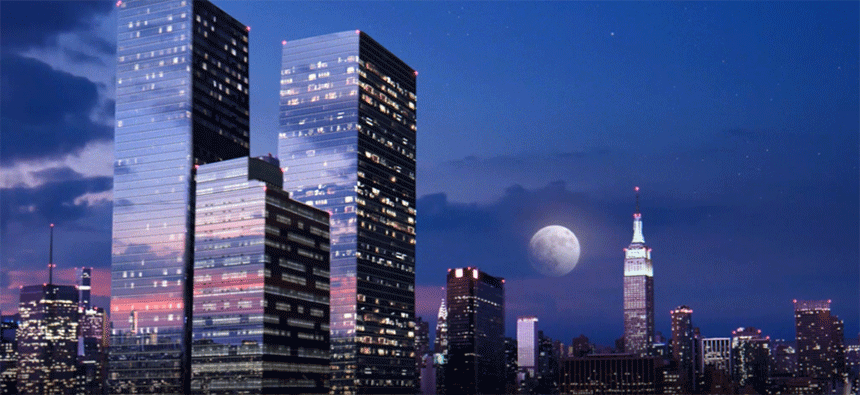Architectural Renderings – A Technical Breakdown
Producing high quality architectural renderings for projects both big and small is a mainstay at River Film. And when doing so, it’s not uncommon for interested parties to ask just how the process works. So, for the uninitiated, here we reveal some of the creative and technical processes that drive the CGI work we do.

River Film: Architectural renderings that seamlessly blend live action with CGI
Manhattan West
Manhattan West, in New York, is a huge project being undertaken by Brookfield Properties. Seven million square feet of office, retail, residential and hotel space is under construction at the site and we won the contract to provide the CGI renderings required to help the project fly.
“It’s rare to be able to conceptualise a new locale at such scale, but Brookfield, the visionaries behind the transformative Brookfield Place New York, has worked with a team of highly respected architects, engineers, designers, landscapers and urban planners to create this dynamic destination.” Brookfield.
We Live for the Big Idea
It won’t come as a surprise that “a day spent in pre-production will save a week in post-production” – planning is key when it comes to creating any type of architectural renderings. So, in response to Brookfield’s brief, we came up with a three-route proposal for them to consider – they chose route three, “Alchemy”.
The Alchemy route proposed using live action footage and CGI renderings with real life characters composited on top of them. It was also agreed that an original musical score would be written and recorded to complement the dialogue and the other sound that the film would feature.
Sound would become an increasingly important part of the film, not only because of the surround sound capability of the client’s marketing suite, but also because of the capacity of great music and sound design for gestures and layers that metaphorically and emotionally amplify the film’s visual elements.
Modelling Texture and Lighting
Once a creative roadmap had been established, it was time to get technical in our London studio. Initially, this meant modelling the designs for the buildings that were to be included in the film. Here we used 3DS Max from Autodesk, this software allows the user to “shape and define detailed environments, objects and characters. Model any person, place or thing” – it’s a really powerful tool and perfect for the job at hand.

River Film: Alchemy being “tweaked” in Nuke
Corona was used to render the work that had been completed in 3DS Max, including modelling, textures and lighting. Meanwhile, across the pond in New York, actors were being auditioned and prepped for the live action sequences and voice recordings.
Using Human Talent
One of the factors that sets us apart from the crowd when producing renderings for the architectural sector is that, wherever we can, we use real actors for the characters in our films. Blending the real images with CGI seamlessly and to cinematic standards means that in the end result you’d find it difficult to tell the two apart.
Using human actors also means that we were able to embrace as wide a range of stakeholders in Manhattan West as was desired – the “melting pot” of diverse office and retail tenants, decision-makers and workers, and perhaps residents, visitors, traditional and social media. Plus, we can use the characters to organically introduce the key features of the project.
Post-Production and Compositing
This is where everything comes together and we begin to see the fruits of our labour. Nuke is the software we used in post-production to pull together all of the images, video and sound. Here the opportunities for altering the parameters of any individual components of the film are almost endless and allow us to perfect the product – leaving us with a completed version of the film.

River Film: the use of light allows the audience to see the buildings at different times of day
That isn’t to say that the project is over; remaining flexible to changes and seeking approvals help to ensure that the client receives the highest possible standards of service and product. So, should the client require any technical or creative changes we are, of course, more than happy to oblige. For the Manhattan West film, this meant adding in some extra live footage and some archive material – the latter, to provide some historical context to the narrative of the project.
So, as you can see, producing first class architectural renderings involves a multi-disciplinary approach from the drawing board to the final edit. And whilst technology plays a major role in the process, the most important factor is to ensure the work is on-brand and works effectively as a marketing tool.
Do take a look at our award-winning Manhattan West real estate film. And if you want to know more about our services or ask for a quote, let us know and we’ll come back to you as soon as possible.
